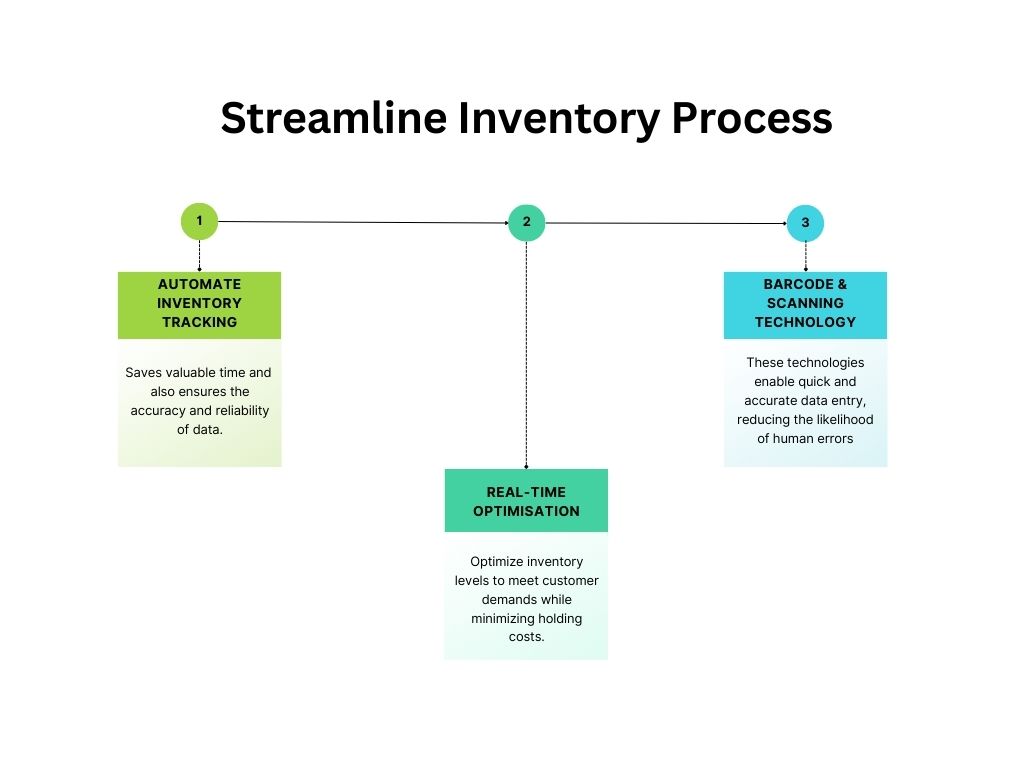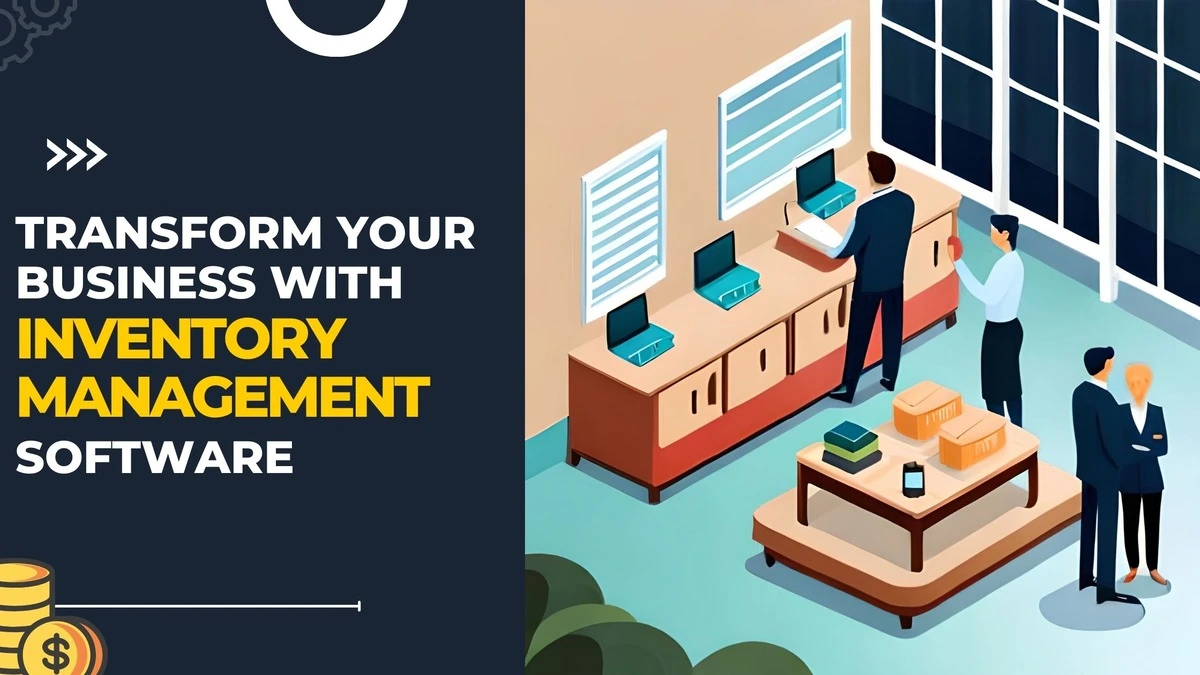In today’s business landscape, effective inventory management plays a crucial role in driving operational efficiency and maximizing profitability. One of the key solutions that can significantly simplify and enhance inventory management processes is the adoption of inventory management software.
By leveraging the power of technology, businesses can streamline their inventory processes, increase efficiency, cut costs, improve customer satisfaction, and unlock scalability and growth opportunities.
Understanding Inventory Management Software
Inventory management software refers to a digital solution specifically designed to optimize and automate inventory-related tasks. It offers a range of key features that empower businesses to efficiently control their inventory levels, track stock movements, and make data-driven decisions.
Some common features include inventory tracking, demand forecasting, reporting and analytics, order management, and integration with other business systems. There are various types of inventory management software available in the market, catering to the diverse needs of different industries and businesses.
Some solutions are cloud-based, providing businesses with the flexibility to access their inventory data from any device or location. On the other hand, certain software can be installed locally on a company’s servers for enhanced security and control.
Streamlining Inventory Processes with Software

Implementing inventory management software enables organizations to streamline their inventory processes in several ways. Here are some key ways software helps optimize inventory management:
Automating inventory tracking and monitoring
Instead of relying on manual processes that are prone to errors and time-consuming, software automates the tracking and monitoring of inventory levels. This not only saves valuable time but also ensures the accuracy and reliability of data.
Optimizing inventory levels in real-time
Inventory management software provides businesses with real-time visibility into their stock levels, allowing them to make informed decisions regarding replenishment and avoiding stockouts or excess inventory.
With accurate inventory data at their fingertips, businesses can optimize their inventory levels to meet customer demands while minimizing holding costs.
Implementing barcode and scanning technologies for efficient stock management
By integrating barcode and scanning technologies, inventory management software streamlines stock management processes. These technologies enable quick and accurate data entry, reducing the likelihood of human errors. Additionally, barcode and scanning capabilities expedite processes such as receiving, picking, and cycle counting, enhancing overall operational efficiency.
How to Increase Efficiency and Productivity via Inventory Software?
Adopting inventory management software offers significant advantages in terms of efficiency and productivity within the organization. Here’s how it helps:
Reducing manual errors and eliminating duplicate data entry
With automation at its core, inventory management software eliminates the need for manual data entry, thus reducing the chances of errors and duplications. By removing time-consuming manual tasks, employees can focus on more value-added activities, boosting overall productivity.
Enhancing order fulfillment processes with streamlined inventory management
Effective inventory management ensures businesses have the right products in the right quantities to fulfill customer orders. Inventory management software enables efficient order fulfillment by providing accurate real-time inventory data, streamlining the picking and packing process, and minimizing order errors.
Centralizing inventory data for easy access and analysis
Inventory management software centralizes all inventory data in one place, making it easily accessible to authorized employees. This data centralization enables efficient analysis, reporting, and decision-making, leading to improved operational efficiency and informed business strategies.
Cost Savings and Improved Profitability
Implementing inventory management software brings about cost savings and improved profitability. Here are the key areas where businesses experience financial benefits:
Minimizing stockouts and excess inventory through accurate demand forecasting
Inventory management software integrates powerful demand forecasting algorithms, enabling businesses to anticipate customer demand accurately. By minimizing stockouts and excess inventory, businesses can avoid lost sales and reduce carrying costs, thereby positively impacting the bottom line.
Reducing carrying costs and holding expenses
Efficient inventory management software minimizes the need for excessive safety stock, reducing inventory carrying costs. By optimizing inventory levels and avoiding overstocking, businesses can free up valuable capital that would otherwise be tied up in stale inventory.
Optimizing supplier relationships and negotiating better terms
With robust inventory management software, businesses can effectively manage their supplier relationships. Accurate and timely inventory data enables businesses to negotiate better purchasing terms, such as volume discounts, early payment rebates, or reduced lead times, leading to cost savings and improved profitability.
Enhancing Customer Satisfaction
Inventory management software plays a pivotal role in enhancing customer satisfaction. Here’s how it achieves this:
Improving order accuracy and on-time deliveries
Accurate inventory tracking and real-time inventory visibility enable businesses to fulfill customer orders with higher accuracy. With inventory management software, businesses can reduce order errors, avoid stockouts, and ensure timely deliveries, resulting in improved customer satisfaction and loyalty.
Real-time inventory visibility for customers and sales teams
Some advanced inventory management software solutions offer features that provide real-time inventory visibility to customers and sales teams. This visibility empowers customers to make informed purchasing decisions and enables sales teams to provide accurate product availability information, fostering trust and customer satisfaction.
Personalizing customer experiences through inventory insights
By leveraging inventory insights available through inventory management software, businesses can tailor their offerings and customer experiences. For example, businesses can identify customers’ preferred products, analyze purchase patterns, and personalize recommendations, resulting in higher customer satisfaction and repeat purchases.
Scalability and Growth Opportunities
Inventory management software aids businesses in scaling their operations and capitalizing on growth opportunities. Here’s how it supports scalability:
Accommodating business expansion with scalable inventory management solutions
As businesses grow, their inventory management needs evolve. Inventory management software provides scalable solutions that can accommodate increasing inventory volumes, multiple locations, and complex supply chain processes, ensuring seamless operations as the business expands.
Streamlining multi-channel inventory management for omnichannel businesses
For businesses operating across multiple channels, such as brick-and-mortar stores, e-commerce platforms, and marketplaces, inventory management software streamlines inventory management across channels. It enables businesses to synchronize inventory levels, allocate stock efficiently, and ensure consistent customer experiences, driving growth in omnichannel sales.
Leveraging real-time data for strategic decision-making and future planning
Inventory management software empowers businesses with real-time data insights. By analyzing this data, businesses can make informed decisions regarding purchasing, pricing, and product strategies, positioning them for growth opportunities and future planning.
Mitigating Risk and Compliance
Inventory management software plays a crucial role in mitigating risks and ensuring compliance. Here’s how it addresses these concerns:
Ensuring regulatory compliance in inventory management
Depending on the industry, businesses often have to adhere to strict regulations, such as FIFO (First-In, First-Out) or Lot Tracking. Inventory management software automates these processes, ensuring compliance and reducing the risk of non-compliance penalties.
Reducing the risk of stock obsolescence and expiration
With accurate real-time inventory data, businesses can proactively monitor product shelf life and expiration dates. Inventory management software facilitates better inventory rotation, minimizing the risk of stock obsolescence and reducing financial losses.
Implementing security measures to protect inventory data
Inventory management software prioritizes data security, employing encryption protocols and access controls to safeguard inventory data. By implementing appropriate security measures, businesses can protect sensitive information and prevent potential breaches.
Integrating Inventory Management Software with Existing Systems
Compatibility and integration with existing systems are essential for seamless business operations. Inventory management software offers the following integration capabilities:
Compatibility with accounting and ERP software
For efficient financial management and recordkeeping, inventory management software integrates with accounting and Enterprise Resource Planning (ERP) systems. This integration ensures smooth flow of inventory-related data, eliminates data discrepancies, and enables accurate financial reporting.
Synchronizing inventory data with e-commerce platforms and POS systems
Businesses operating e-commerce platforms or Point of Sale (POS) systems can integrate their inventory management software to synchronize inventory levels across these channels. This integration prevents overselling, updates stock availability in real-time, and eliminates manual inventory adjustments.
Streamlining order management and fulfillment processes
Integrating inventory management software with order management systems and fulfillment centers minimizes order processing time and errors. This integration automates tasks such as order routing, picking, and shipping, enhancing overall operational efficiency.
Evaluating and Selecting Inventory Management Software
When considering inventory management software, businesses must carefully assess their needs and select the solution that best aligns with their requirements. Here are the key steps involved in evaluating and selecting inventory management software:
Assessing business needs and identifying key requirements
Businesses should evaluate their current inventory management challenges and identify the key requirements they seek in a software solution. This involves considering factors such as scalability, ease of use, integration capabilities, reporting functionalities, and budget constraints.
Comparison of top inventory management software providers
There are numerous inventory management software providers in the market. It is important to compare different solutions based on features, customer reviews, pricing models, and customer support to find the most suitable option for the business.
Considerations for implementation and training
Apart from the software itself, businesses should also consider the implementation process and training requirements. Factors such as data migration, software deployment options, training resources, and technical support should be taken into account while selecting an inventory management software provider.
Implementing Inventory Management Software Successfully
Successful implementation is crucial to derive maximum benefits from inventory management software. Here’s a roadmap for implementing the software effectively:
Planning and preparing for software implementation
Before commencing the implementation process, businesses should develop a detailed plan outlining the steps, roles, and responsibilities. Adequate preparation involving data cleanup, system backups, and resource allocation is essential for a smooth implementation.
Training employees and adapting workflows to new processes
Employee training plays a significant role in successful software adoption. Businesses should invest in comprehensive training programs to ensure employees are well-equipped to utilize inventory management software. Additionally, adapting workflows and processes to leverage the full potential of the software is essential for optimal results.
Overcoming challenges during the implementation phase
Implementing inventory management software may present challenges, such as resistance from employees, technical issues, or data migration complexities. It is crucial to address these challenges promptly with open communication, IT support, and change management strategies to ensure a successful implementation.
Measuring Success and ROI of Inventory Management Software
To measure the success and return on investment (ROI) of inventory management software, businesses should focus on the following:
Key performance indicators (KPIs) to track inventory management efficiency
Businesses should define relevant KPIs to gauge the effectiveness of their inventory management practices. KPIs such as stock accuracy, order fulfillment rate, stock turnover ratio, and carrying costs provide insights into the efficiency and profitability of inventory management.
Calculating return on investment (ROI) and cost savings
Measuring the financial impact of inventory management software involves comparing the costs associated with the software implementation and maintenance against the cost savings achieved. By analyzing factors like reduced stock obsolescence, improved order accuracy, and minimized carrying costs, businesses can calculate the ROI of their inventory management software investment.
Continuous improvement strategies for optimal utilization of inventory software
Maximizing the benefits of inventory management software requires continuous improvement. Businesses should monitor KPIs, solicit feedback from employees, and implement refinement strategies to optimize software utilization, ensuring ongoing success.
Best Practices for Inventory Management Software Usage
To fully leverage the potential of inventory management software, businesses should follow these best practices:
Regular data maintenance and data cleansing practices
Accurate and up-to-date inventory data is vital for effective inventory management. Businesses should conduct regular data maintenance and cleansing routines to ensure data integrity and reliability. This includes activities such as data validation, removing duplicate records, and updating inventory status.
Conducting periodic inventory audits
Periodic inventory audits help identify discrepancies and inaccuracies within the system. By reconciling physical counts with software records, businesses can rectify any discrepancies, improve stock accuracy, and fine-tune their inventory management processes.
Collaborating with stakeholders and teams for effective software utilization
Successful utilization of inventory management software requires collaboration among various stakeholders, including warehouse teams, sales teams, and finance teams. Businesses should foster cross-functional collaboration, encourage open communication, and actively engage teams to utilize the software to its full potential.
Summary
Embracing inventory management software offers numerous benefits for businesses of all sizes and industries. From streamlining inventory processes and increasing efficiency to improving customer satisfaction and unlocking growth opportunities, the advantages are significant. By selecting the right software solution, planning for successful implementation, measuring success, and following best practices, businesses can transform their operations and enhance their bottom line.
Inventory management software is a digital solution that helps businesses efficiently control and optimize their inventory levels. It works by automating inventory tracking, providing real-time visibility into stock levels, and enabling data-driven decision-making.
The key benefits of using inventory management software include streamlining inventory processes, increasing efficiency and productivity, achieving cost savings and improved profitability, enhancing customer satisfaction, unlocking scalability and growth opportunities, mitigating risks and ensuring compliance, and integrating with existing systems.
Inventory management software improves customer satisfaction by ensuring order accuracy, facilitating on-time deliveries, providing real-time inventory visibility to customers, and enabling personalized customer experiences based on inventory insights.
Challenges that can arise during the implementation of inventory management software include resistance from employees, technical issues, data migration complexities, and change management hurdles. However, these challenges can be overcome through effective communication, proper planning, and support from IT and management teams.
Measuring the success and return on investment of inventory management software involves tracking relevant key performance indicators (KPIs) related to inventory management efficiency, calculating the financial impact of cost savings achieved through software adoption, and implementing continuous improvement strategies for optimal utilization of the software.
Best practices for utilizing inventory management software effectively include regular data maintenance and cleansing practices, conducting periodic inventory audits, and fostering collaboration among stakeholders and teams for efficient software utilization.


